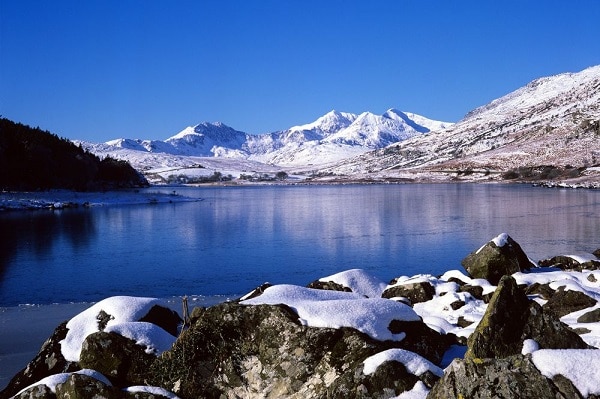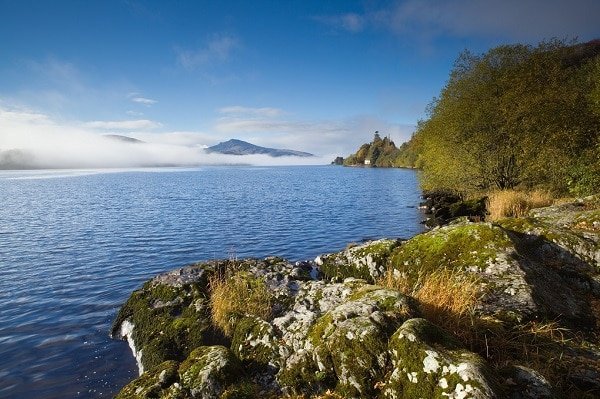
On October 18th, 1951, Snowdonia was named as a National Park of Great Britain. To celebrate its 70th birthday, we look at some of the highlights of this majestic Welsh park. We uncover a few of those special places, and share tips on when to visit, where to stay, etc.

Snowdonia is one of three National Parks in Wales, and officially opened in 1953. Its Welsh name is Eryri, most likely derived from the local word for highlands. Covering an area of 823 square miles in North Wales, Snowdonia also has 37 miles of coastline. An estimated 3.67 million visitors come to Snowdonia each year. Roughly 26,000 people make their home here, many as farmers.
Weather watchers might be interested to know that this is one of the wettest parts of Britain. Some areas of the park receive an average 176 inches of rain per year.

There are three information centres in the National Park – at Betws-y-Coed, Beddgelert, and Aberdyfi. Each has local information about the park, accommodation, and activities. At Betws-y-Coed, visitors can view “Flight Over Snowdon”, an aerial video of the park. There is also an exhibition: “Snowdonia: More Than Just Mountains”.
What to do.
As with all of the National Parks in Britain, there are dozens of activities to do within the park boundaries. But let’s start with the obvious. Mount Snowdon itself is the highest peak in Wales and so attracts many people keen to reach its summit. Some simply wish to climb this peak, while others are attempting the Three Peaks Challenge. There are six different paths to the top, all of them challenging. Ranging in distance from 7 to 9 miles, there and back, each path has its own bonuses to offer. The PYG track is the shortest and most difficult, definitely not for inexperienced walkers. The longest, the Llanberis Path, has views that stretch to Anglesey on a clear day, but again, this is a challenging walk. Do not overestimate your abilities, or the changing weather conditions.
There are several other mountain walks that are suited to more experienced walkers and climbers. These also tend to be less crowded that the routes up Snowdon.

Those preferring a more leisurely stroll will find plenty of trail options, whether it is following the coastline, crossing green pastures, or discovering the old gold mines. Several local walking clubs offer group walks. One of these, the Eryri Walking Club, provides regular guided walks for the blind and visually impaired.
Other activities within the park include mountain biking and horse riding. Climbing is popular and there are several climbing centres, as well as groups offering guided climbs. Watersports, including kayaking, sailing, and whitewater rafting, are also available.

What to see.
If you’d like to say you’ve been to the top of Mount Snowdon, but don’t feel up to the hike, join the dozens of other visitors who ride to the summit on the Snowdon Mountain Railway. The railway has been operational since 1896, and is the only public rack and pinion railway in the UK. It climbs from Llanberis along a four and a half mile route to the summit. A visitor’s centre has hot drinks to enjoy while taking in the view. The Snowdon Mountain Railway runs daily from March to October.
It’s not the only railway within Snowdonia National Park. Other routes and options include the Ffestiniog Railway to Porthmadog, the Bala-Lake Railway, and the Llanberis Lake Railway. More railway options can be found online.

Snowdonia is also home to many castles and historic sites. Remember that this is the Year of Legends in Wales. You’ll certainly find plenty of tales of heroic deeds here. Many of the castles were built in the 13th century, some by Welsh princes, others by King Edward I as he conquered the region. Harlech Castle is one of his best-known fortresses. In 1404, the Welsh took over the castle and set up a parliament. Later, during the Wars of the Roses, it would be the site of a long siege, which later inspired the song “Men of Harlech”.
Llywelyn Fawr built Dolbadarn Castle to protect against invaders. In the following years, it would be used as a prison by warring brothers. Finally, in 1282, it was captured by the English, only to be abandoned two years later.
Also worth a visit are the ruins at Cymer, the ruins of a Cistercian Abbey founded in 1198. Abbeys such as these once were dotted across the medieval Welsh landscape. Today, these are the only such remains within Snowdonia.
Avoid the crowds.
Most of the visitors to Snowdonia National Park tend to concentrate at Mount Snowdon itself or the most popular castles – Conwy and Caernarfon in particular. But there are many more historic places to explore or mountain trails to hike away from these best-known spots. Dolwyddelan is much quieter, but no less beautiful. The Rhinogydd area in the west of the park is quite remote and therefore attracts fewer tourists. If you skip the northernmost parts of the park, you should have no problems finding somewhere off the beaten track.
Where to stay.
Camp and caravan sites are available at several locations through the park. Wild camping is also permitted and can be a chance to experience the true wilderness of the region. Be aware, however, that much of the land is privately owned and so, unless permission is given by the owner, you may find yourself trespassing.
Whatever your accommodation preference–hotel, bed and breakfast, or self-catering–you will find a huge range of options to suit a variety of budgets. A great deal of information about where to stay and what to do can be found at Visit Snowdonia. Our sidebar includes several affiliate links to hotel chains and cottages within the area.




3 thoughts on “National Park Spotlight: Snowdonia”
Comments are closed.